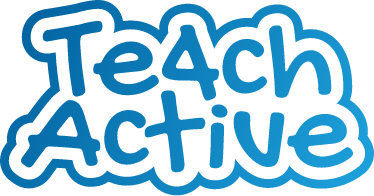Primary school classrooms are vibrant, dynamic environments where diverse learners come together to grow, explore, and thrive. Among these students are those with Special Educational Needs and Disabilities (SEND), who require tailored strategies to unlock their potential. Active learning, especially through programmes like Teach Active, offers a powerful way to engage SEND pupils in meaningful and enjoyable educational experiences.
What is Active Learning?
Active learning is an approach that encourages students to participate directly in their learning journey. Instead of passively listening, pupils engage in activities that promote critical thinking, collaboration, and physical movement. For SEND pupils, active learning can transform lessons into accessible, engaging, and memorable experiences that cater to a variety of needs.
Why Active Learning Benefits SEND Pupils
- Engagement and Motivation: Physical activities stimulate sensory input, making lessons more engaging for pupils who may struggle with traditional teaching methods.
- Improved Focus: Short bursts of activity can enhance concentration and reduce restlessness, particularly for pupils with ADHD or other attention-related challenges.
- Multisensory Learning: Active learning leverages multiple senses—sight, sound, and movement—to help pupils retain information more effectively.
- Social Interaction: Group activities foster collaboration and communication, helping SEND pupils develop essential social skills in a supportive setting.
- Inclusive Environment: Active learning promotes an inclusive classroom where pupils of all abilities can participate and succeed.
The Role of Teach Active
Teach Active is an innovative programme that integrates physical activity into the core subjects of maths and English. By linking movement with learning, Teach Active provides a unique platform to support all pupils, including those with SEND, in achieving academic and personal growth. The programme aligns with the National Curriculum and offers resources that are adaptable to individual needs.
Practical Strategies for Using Teach Active with SEND Pupils
- Personalised Activities: Adapt Teach Active resources to suit individual needs. For example, simplify instructions or provide visual cues to support understanding.
- Small Group Work: Organise pupils into smaller groups to encourage participation and provide focused support.
- Visual and Tactile Aids: Use visual schedules, diagrams, or tactile materials to complement activities and reinforce learning.
- Clear Routines: Establish consistent routines for active sessions to provide structure and reduce anxiety.
- Celebrate Success: Recognise and celebrate achievements, no matter how small, to build confidence and encourage persistence.
How can this be applied in the classroom?
Imagine a lesson on fractions where pupils physically divide objects into parts or a literacy session where they match words to actions while moving around the classroom. Such activities not only make abstract concepts tangible but also keep pupils engaged and motivated.
Active learning through programmes like Teach Active is more than just a teaching method; it’s a pathway to inclusivity and engagement for SEND pupils. By integrating movement with learning, primary school teachers can create a classroom environment where every child feels valued and supported.
As you plan your next lesson, consider how you can incorporate active learning strategies to support your SEND pupils. With creativity, adaptability, and resources like Teach Active, you can make a lasting impact on their educational journey.
